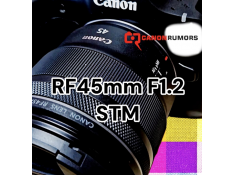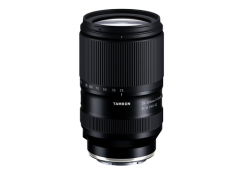Carbon Fiber Tripod VS Aluminum Tripod:Which is better?
Friday 26 July 2024
 6.0k
6.0k
 Reproduction without the author's authorization is prohibited
Reproduction without the author's authorization is prohibited
Why tripods are usually made of carbon or aluminum
Carbon fiber tripods are lightweight, making them easy to carry, especially for outdoor and travel photography. They are also very strong, supporting heavy camera equipment with minimal flexing. Carbon fiber has excellent vibration-dampening properties, which helps reduce camera shake and ensures sharper images. Additionally, carbon fiber is more resistant to corrosion and environmental elements, making it ideal for use in various weather conditions.
Aluminum tripods are generally more affordable compared to carbon fiber ones, making them accessible to a wider range of users. They are robust and can withstand rough handling and harsh conditions. Although heavier than carbon fiber, the added weight of aluminum can provide stability, which is beneficial in windy conditions or when using long lenses. Aluminum tripods often offer a good balance between cost, weight, and durability, making them a popular choice for many photographers.

Carbon fiber tripod:pros and cons
Pros
Lightweight: Carbon fiber is much lighter than many other materials, making tripods easier to carry and handle, especially for travel and outdoor photography.
High Strength: Despite its light weight, carbon fiber is very strong and can support heavy camera equipment with minimal flexing or bending.
Vibration Dampening: Carbon fiber has excellent vibration-dampening properties, which reduces camera shake and results in sharper images.
Corrosion Resistance: Carbon fiber is resistant to corrosion and is not affected by moisture, making it durable in various weather conditions.
Temperature Stability: It performs well in both extreme heat and cold, maintaining its strength and integrity.
Cons
Cost: Carbon fiber tripods are generally more expensive than those made from other materials like aluminum.
Brittleness: While strong, carbon fiber can be brittle and is more susceptible to cracking or breaking under extreme impact or stress.
Repair Difficulty: Damage to carbon fiber can be harder and more expensive to repair compared to metals.
Production Impact: The manufacturing process of carbon fiber can be more energy-intensive and have a higher environmental impact compared to aluminum.

Aluminum tripod:pros and cons
pros
Durability: Aluminum tripods are generally very sturdy and can withstand rough handling and harsh conditions.
Affordability: They tend to be more budget-friendly compared to carbon fiber tripods.
Weight: While not as light as carbon fiber, aluminum tripods are still relatively lightweight and portable.
Stability: Aluminum tripods offer good stability, making them suitable for long exposure photography and use in windy conditions.
Versatility: They often come with adjustable legs and various features that cater to different types of photography and videography.
Heat Resistance: Aluminum tripods can handle high temperatures better than some other materials, making them suitable for use in hot environments.
Cons
Weight: Although lighter than some materials, they are heavier than carbon fiber, which can be a drawback for extended travel or hiking.
Temperature Sensitivity: Aluminum can become very cold to the touch in low temperatures and quite hot in high temperatures, which can be uncomfortable to handle.
Corrosion: While aluminum is resistant to rust, it can corrode over time, especially if exposed to saltwater environments.
Vibration: Aluminum tripods can transmit more vibrations compared to carbon fiber tripods, which might affect image sharpness in some situations.
Aesthetics: Over time, aluminum can show wear and tear more visibly than carbon fiber, which can affect its appearance.
Situations to Use a Carbon Fiber Tripod
Travel and Hiking: Carbon fiber tripods are significantly lighter than aluminum tripods, making them ideal for long hikes or extensive travel. Their lightweight and compact design enhances portability, allowing photographers to pack and transport them with ease.
Extreme Weather Conditions: Unlike aluminum, carbon fiber remains relatively neutral in temperature, so it won’t become excessively hot or cold to the touch. This makes carbon fiber tripods more comfortable to handle in extreme weather conditions. Additionally, carbon fiber is resistant to corrosion, making these tripods suitable for humid or saltwater environments.
Vibration-Sensitive Photography: One of the key advantages of carbon fiber tripods is their ability to absorb vibrations better than aluminum. This is particularly important for long-exposure photography, macro photography, and using telephoto lenses where stability is paramount. The reduced vibrations help in achieving sharper images.
Aerial Photography: For drone operators and aerial photographers, the stability and reduced weight of carbon fiber tripods provide significant benefits. These tripods offer better wind resistance and stability in windy conditions, which is crucial for capturing steady shots from the air.
Videography: Carbon fiber tripods are also beneficial for videographers. Their stability and vibration damping capabilities allow for smoother pans and tilts, producing high-quality footage. During prolonged shooting sessions, the lighter weight reduces fatigue, making it easier to move the tripod frequently without strain.
Situations to Use an Aluminum Tripod
Budget-Conscious Purchases: Aluminum tripods are generally more affordable than carbon fiber tripods, making them an excellent choice for photographers and videographers on a budget. They offer a good balance of performance and cost, making high-quality tripods accessible without a significant investment.
Durability and Toughness: Aluminum tripods are known for their durability and ability to withstand rough handling and harsh conditions. This makes them suitable for outdoor photography where the equipment might be exposed to rugged terrains and unpredictable weather.
Stability in Challenging Conditions: Due to their heavier weight compared to carbon fiber tripods, aluminum tripods can offer better stability, especially in windy conditions. This makes them a reliable option for long-exposure photography or shooting in environments where stability is crucial.
Heat Resistance: Aluminum tripods can handle high temperatures better than some other materials. This makes them suitable for use in very hot environments where other tripod materials might struggle.
Versatility and Adjustability: Aluminum tripods often come with adjustable legs and various features that cater to different types of photography and videography. Their design typically includes versatile components that can adapt to various shooting conditions and requirements.
Studio Work and Controlled Environments: In a controlled studio environment where weight is less of an issue, the durability and stability of aluminum tripods can be very beneficial. They provide a solid foundation for heavy camera equipment and are less prone to accidental movement or tipping.
Learning and Practice: For beginners who are just getting into photography or videography, an aluminum tripod offers a practical and cost-effective option. It allows new users to learn and practice without the worry of damaging a more expensive piece of equipment.
When choosing a tripod, consider factors like weight and portability, especially if you travel frequently or hike to shooting locations. Opt for lightweight materials like carbon fiber for easier transport. Ensure the tripod's load capacity can support your camera and gear, selecting a sturdy option for heavier equipment. Stability and durability are critical; aluminum tripods are durable and stable for rugged use, while carbon fiber offers a good balance of strength and lightness.
The head type is also important: ball heads offer flexibility, pan-tilt heads provide precise control, and fluid heads are perfect for videography. Your budget is another consideration, with affordable options available that still offer good performance for casual photographers. For macro photography, choose a tripod with versatile shooting angles that can adjust to very low positions.
Whenever possible, test different tripods in-store to ensure they meet your height, weight, and stability needs. Read reviews to gauge performance and durability, and consider future needs to ensure your tripod investment supports your growing photography skills and equipment.
What is the Best Tripod for you?
When choosing a tripod, consider factors like weight and portability, especially if you travel frequently or hike to shooting locations. Opt for lightweight materials like carbon fiber for easier transport. Ensure the tripod's load capacity can support your camera and gear, selecting a sturdy option for heavier equipment. Stability and durability are critical; aluminum tripods are durable and stable for rugged use, while carbon fiber offers a good balance of strength and lightness.

The head type is also important: ball heads offer flexibility, pan-tilt heads provide precise control, and fluid heads are perfect for videography. Your budget is another consideration, with affordable options available that still offer good performance for casual photographers. For macro photography, choose a tripod with versatile shooting angles that can adjust to very low positions.
Statement: all contents and remarks made by K&F CONCEPT 's intranet friends only represent themselves and do not reflect any K&F CONCEPT 's opinions and views.
-
 Canon EOS R7 Mark II Camera to be Released in 2026Friday 24 October 2025
Canon EOS R7 Mark II Camera to be Released in 2026Friday 24 October 2025 -
 Sony is about to release the A1M2a camera, featuring a minor screen upgradeThursday 23 October 2025
Sony is about to release the A1M2a camera, featuring a minor screen upgradeThursday 23 October 2025 -
 Canon RF 45mm F1.2 STM full-frame lens is about to be releasedWednesday 22 October 2025
Canon RF 45mm F1.2 STM full-frame lens is about to be releasedWednesday 22 October 2025 -
 Tamron 25-200mm f/2.8-5.6G2 full-frame lens is now availableTuesday 21 October 2025
Tamron 25-200mm f/2.8-5.6G2 full-frame lens is now availableTuesday 21 October 2025 -
 Fujifilm confirms release of new X-series products on October 23rdTuesday 21 October 2025
Fujifilm confirms release of new X-series products on October 23rdTuesday 21 October 2025






